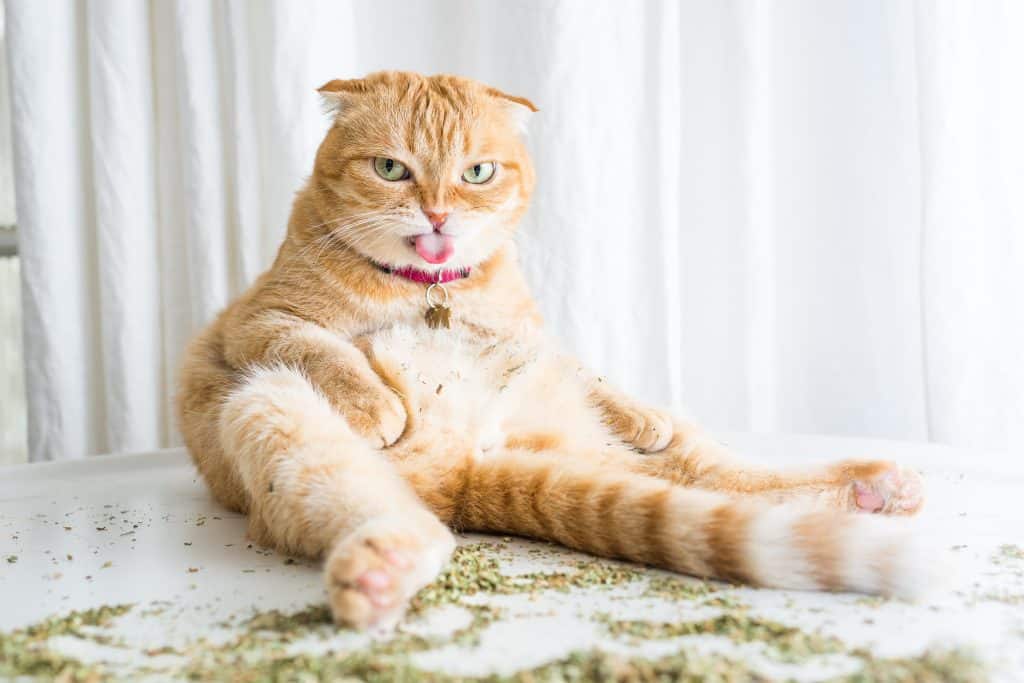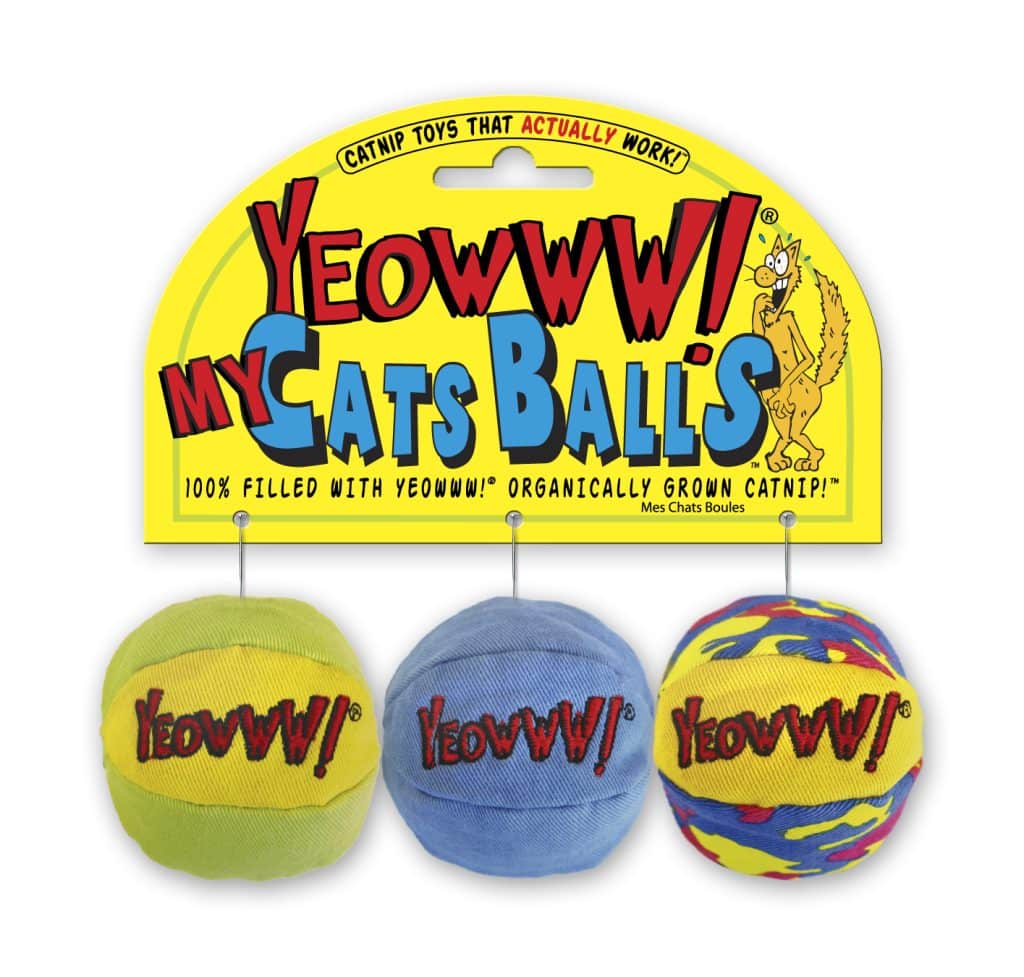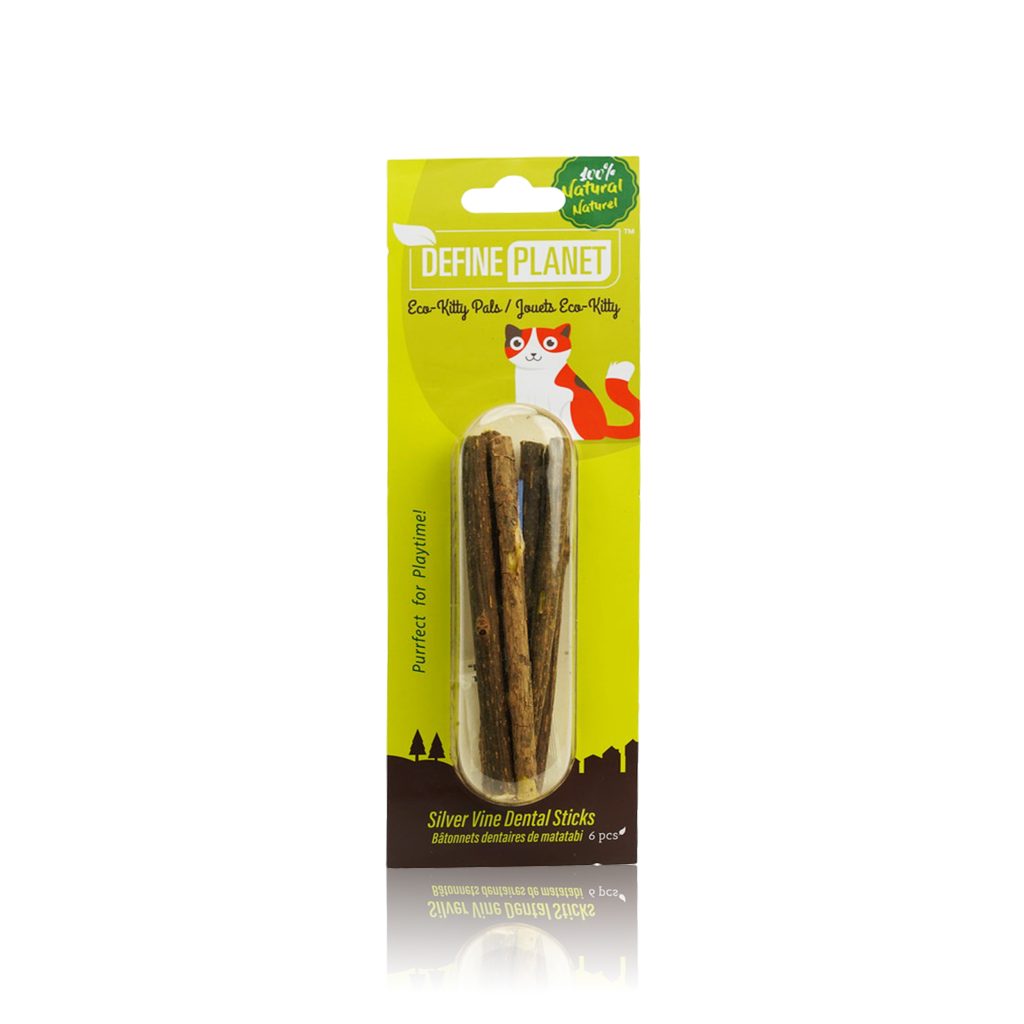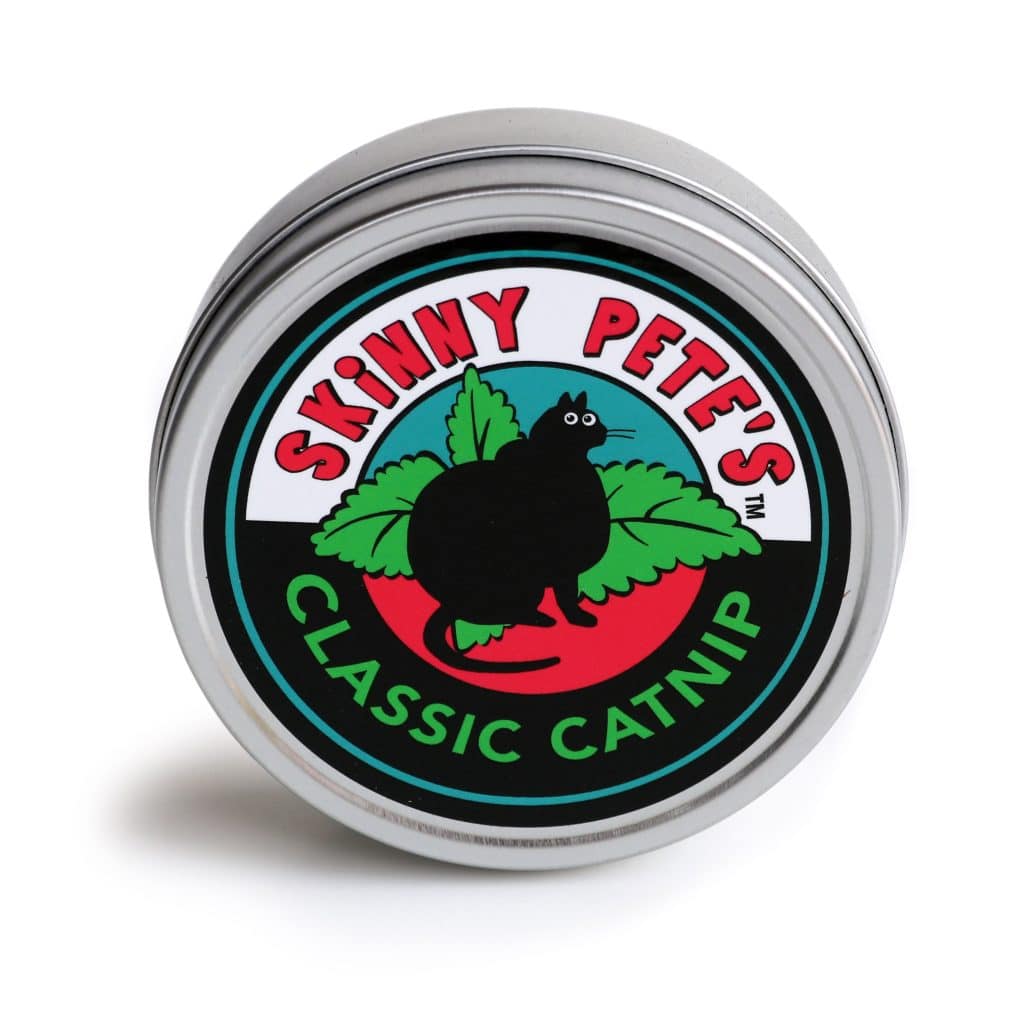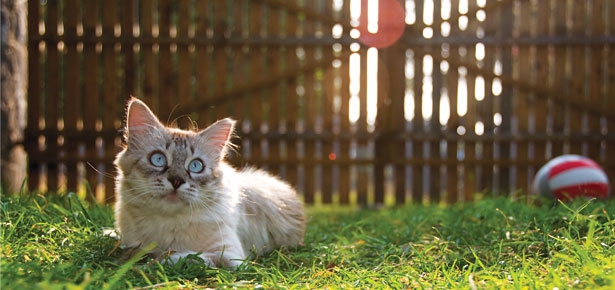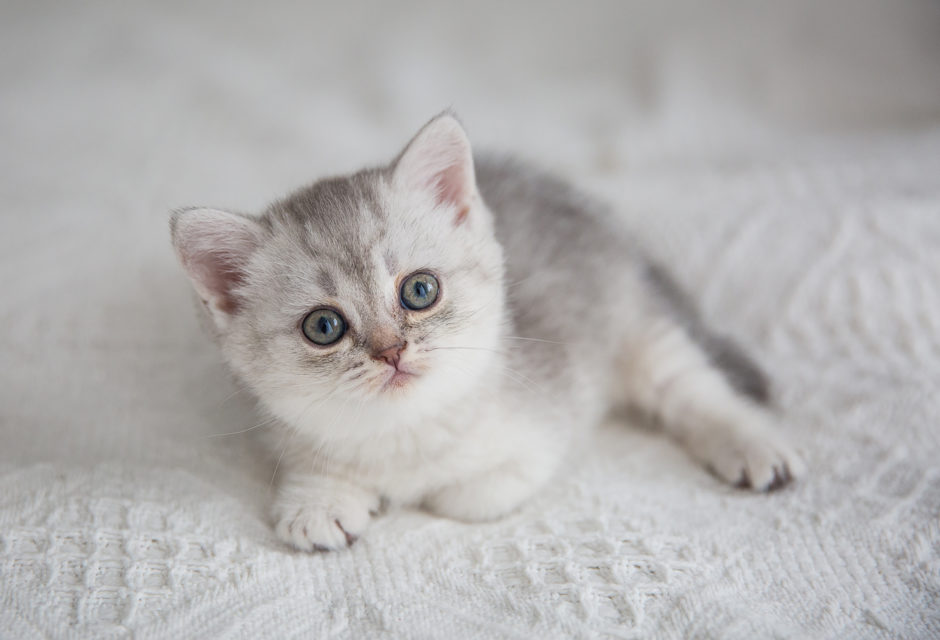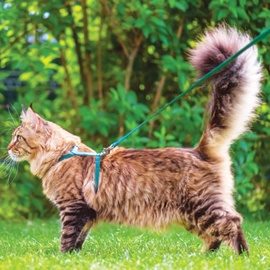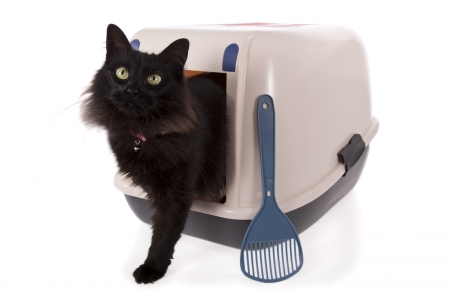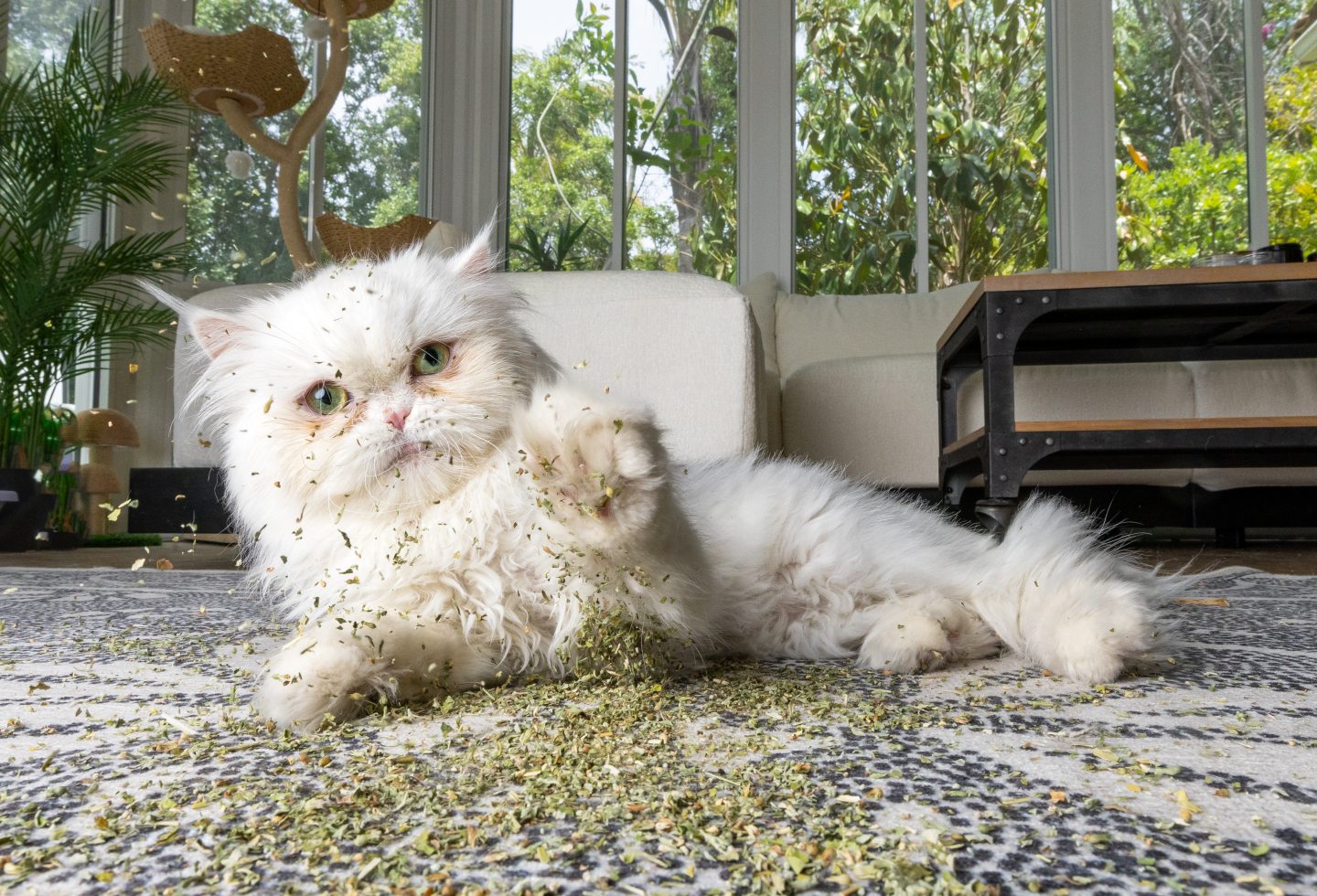
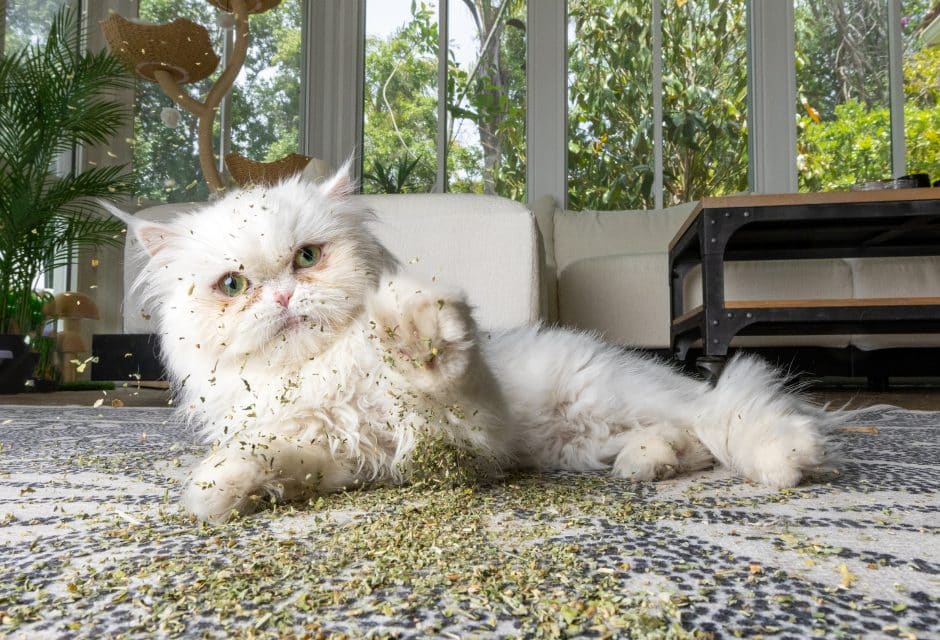
On the ‘Nip: Hilarious Photos of Cats on Catnip
Is catnip good for cats? Plus, these catnip alternatives will drive your cat wild!
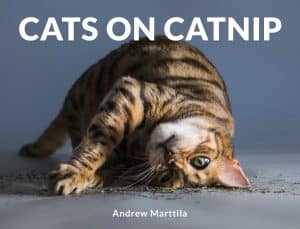 Is there anything more fascinating and funnier than cats experiencing catnip-induced euphoria? Cat photographer Andrew Marttila’s delightful book Cats on Catnip is devoted to the hilarious poses of cats in the thrall of a catnip high, and it is as fun as one would imagine.
Is there anything more fascinating and funnier than cats experiencing catnip-induced euphoria? Cat photographer Andrew Marttila’s delightful book Cats on Catnip is devoted to the hilarious poses of cats in the thrall of a catnip high, and it is as fun as one would imagine.
Undeniably, many cats go crazy for the stuff. But just what is at play here? And is it good for cats?
Researchers suspect that the herb targets feline “happy” receptors in the brain, says the Humane Society of the United States. Cats rolling in catnip tend to have a euphoric response, whereas if eaten, it tends to mellow cats out. Most cats react to catnip by rolling, raking, rubbing cheeks and chin, drooling, bunny-kicking toys, zipping around the house, and eventually chilling out. They may even meow and growl at the same time.
But is catnip good for cats?
Catnip is a wonderful, safe enrichment tool. It can help stimulate cats both mentally and physically, helping contribute to a happier, healthier life. You can use catnip to encourage play, thereby fighting obesity and stress, and to help your cat use their cat scratcher instead of your couch—using catnip on scratchers helps attract your cats to these areas.
Can I give my cat catnip every day?
Though catnip is safe and non-addictive, it’s effect can be diluted if you give it to your cat too often. Alexander Animal Hospital recommends you limit the use of catnip to about once every two to three weeks in order to prevent habituation. Others suggest once a week. Note that young cats and older cats may have a lesser response to cat nip.
My cat doesn’t respond to catnip. Why?
Not all cats respond to catnip. About a third of domestic cats (as well as most tigers) display no response to catnip at all. This is because over 30 percent of domestic cats do not inherit the traits that make them respond to nepetalactone. For these cats, catnip alternatives, like silver vine, Tatarian honeysuckle, and valerian may provide your cat with similar enrichment. All three alternatives cause playful, euphoric behaviour similar to that seen with catnip.
Catnip Alternatives:
Silver Vine
Silver vine (also known as matatabi, Japanese catnip, or cat powder) is the most effective of these plants—almost 80 percent of cats respond positively to silver vine, says the Cummings School of Veterinary Medicine at Tufts University. That’s more than those that respond to catnip.
Silver vine is much more common in Asia, where the Japanese refer to the euphoric behaviour of cats after sniffing the plant as “the matatabi dance.”
While catnip has just one compound (nepetalactone) that attracts cats, silver vine contains two—actinidine and dihydroactinidiolide. It also has half a dozen other active ingredients that are like nepetalactone.
Silver vine poses no risk of toxicity. “I only let my cat play with it once a week [but] it can be used every day without any harmful side effects,” says Sara Ochoa, a veterinary consultant for DogLab.
Tatarian Honeysuckle
Around 50 percent of cats respond to Tartarian honeysuckle. Typical response includes rolling, licking, sniffing, drooling, hugging, and rubbing it on their chin and cheeks. Cats under the influence may become extremely affectionate. Pro tip: wetting the wood can help bring out the aroma. Tartarian honeysuckle is safe for both adult cats and kittens and is a wonderful way to enrich your cat’s environment.
Valerian
Behaviours of cats on valerian root are similar to those of cats on catnip. Expect playful behaviours, such as chin and cheek rubbing, rolling, meowing, pouncing, drooling, and licking. When consumed, the effects of valerian can include euphoria, purring, relaxation, and even falling asleep.
Valerian Root is not only safe for your cat but is beneficial! It helps relieve stress and anxiety and promotes play and exercise for indoor cats. Just under 50 percent of cats respond to valerian.
Sprinkling a ¹⁄4 teaspoon of silver vine on your cat’s bed, toys, or scratching posts can help with anxiety. Chewing on silver vine sticks can help clean the tartar off your cat’s teeth.
Alternatives to Catnip: A 2021 Study on Olfactory Enrichment for Cats
In a study of catnip alternatives, researchers found that 79 percent of domestic cats responded positively to the silver vine, whereas 68 percent responded to catnip, 53 percent to Tatarian honeysuckle, and 47 percent to valerian root. Males and females appeared to be equally responsive. There was no difference in responsiveness based on age, but the researchers did note a lower response intensity in older versus younger cats, specifically for catnip. They also noted that shy or scared cats were just as likely to respond as affectionate and friendly cats.
31 percent of cats did not respond at all to catnip; however, of these cats, 71 percent responded to silver vine, 32 percent to Tatarian honeysuckle, and 19 percent to valerian root, suggesting that these are effective alternatives to catnip. Further, among the 21 percent of cats that responded to only one plant material, that material was most often silver vine. So, if your cat doesn’t respond to catnip—or if you’d simply like to mix it up—try one of these alternatives. Your cat will thank you.
OUR PICKS
A Catnip Toy Cats Go Crazy For
Yeowww! My Cats Balls is a trio of perfectly sized two-inch toys stuffed with potent organic catnip to delight your feline. Perfection. ($12, duckyworld.com)
Silver Vine Chews
If your cat doesn’t react to catnip, try the Define Planet Silver Vine Dental Sticks! Made from unprocessed and natural silver vine, these sticks excite and stimulate cats while also promoting dental health. ($13, defineplanet.com)
Classic, Organic ‘Nip
The Classic Catnip tin from Skinny Pete’s Catnip is packed with 25 grams of pure organic catnip! Perfect for refreshing cat toys or spreading on cat trees or scratch- ers to encourage positive scratching behaviour and play! ($13, skinnypetescatnip.com)
This article originally appeared in the award-winning Modern Cat magazine. Subscribe today!
Join the newsletter and never miss out on cat content again!
"*" indicates required fields
By clicking the arrow, you agree to our web Terms of Use and Privacy & Cookie Policy. Easy unsubscribe links are provided in every email.





